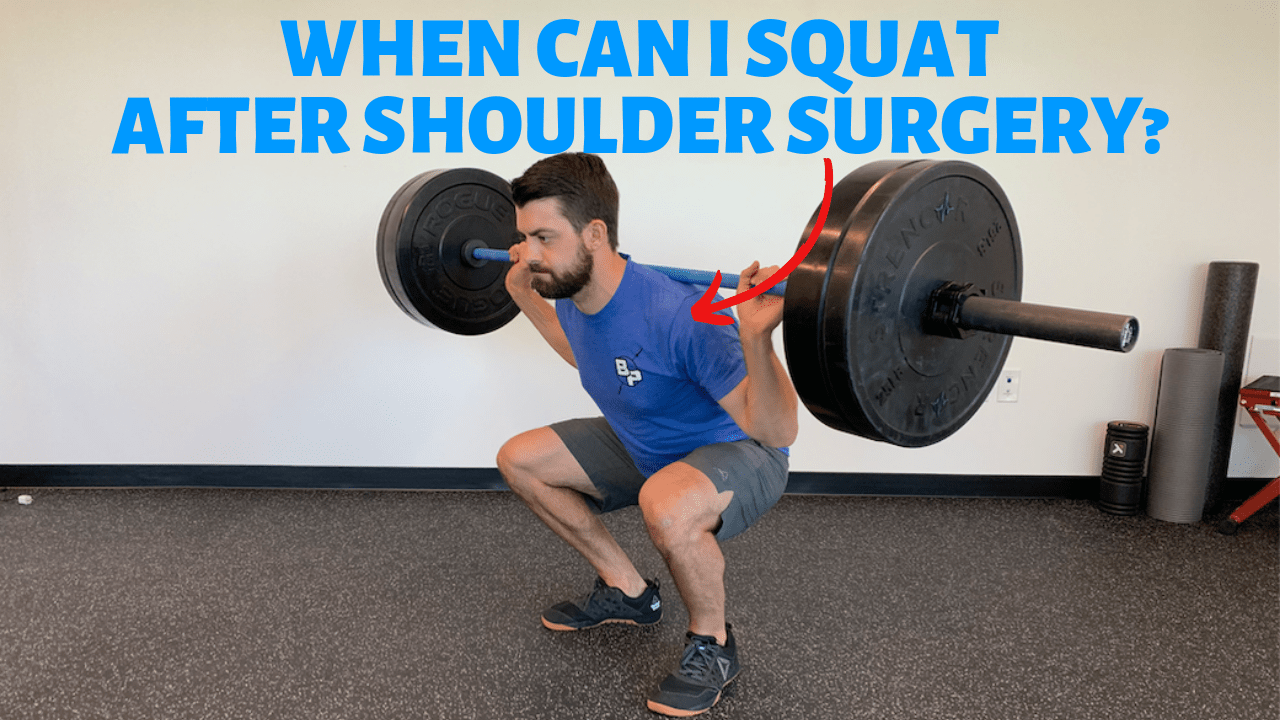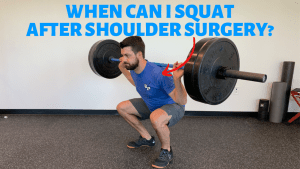One of the first questions that CrossFit, power lift, or Olympic weightlifting athletes ask me after a shoulder surgery such as a rotator cuff or labrum repair is “when can I squat after shoulder surgery?”
With many shoulder surgeries, the shoulder position required to get set up in a back squat position can be challenging. The shoulder must move into end-range external rotation, horizontal abduction, and scapular retraction. Many post-op protocols don’t allow for that position to be achieved for some time. Thus, making loading traditional back squats impossible.
While this is NOT considered medical advice, I do clear many of the athletes I work with to return to back squats after isolated SLAP repairs and rotator cuff repairs around the 12-week mark. But only if they have appropriate mobility and aren’t experiencing negative symptoms when doing so. Of course, exceptions to this rule happen. Usually when more intensive surgeries have been performed, multiple tissues repaired, or the early rehab process is slower than usual. You should always default to your medical team for guidance here.
When Can I Squat After Shoulder Surgery?
There are a few options that I utilize to get athletes performing squats earlier in the rehab process after a shoulder surgery.
Safety squat bar squats are a great option as the front holder position places significantly less stress on the shoulder. If you do not have a safety squat bar, the following video shows my DIY version:
I also utilize belt squats early on in an individual’s fitness plan so that they can squat after shoulder surgery. Traditionally, belt squats are done with an athlete standing between two boxes with a dip or belt squat belt holding weights that hang between the athlete’s legs. The problem with this set up is the danger of falling and difficulty controlling the set up early doing belt squats after shoulder surgery. Instead, I suggest using a SquatMaxMD or landmine belt squat set up as shown in this video. It is much safer to get into and out of position.
View this post on Instagram
Remaining active after a surgery is incredibly important to maintaining maximal fitness and keeping the health gains you’ve previously made in your training.
I do a considerable amount of post-op fitness programming for individuals wanting to stay as active as possible post-surgery. But they need some medical guidance on what they can and cannot do at certain time frames. Please email me for details on how I can help.
.







